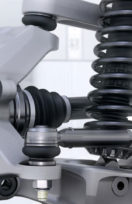Noticed mysterious puddles forming under your vehicle? If you’re dealing with oil and water leaking from your car, it’s important to understand what’s going on—and more importantly, how to fix it. While some moisture might be harmless, fluid leaks can also be early warning signs of mechanical issues that need attention. In this guide, we’ll help you identify the type of leak, explore common causes, and explain when to book a professional vehicle service to keep your car in top shape.
How to Identify Oil vs. Water Leaks in Your Car
The first step is determining what’s leaking from your vehicle. Here’s how to tell the difference between oil and water:
Oil Leak Signs
- Brown or black in colour
- Slippery texture
- Usually found under the engine area
- Has a strong, distinct smell
Water Leak Signs
- Clear and odourless
- Often seen near the front or underneath the passenger side
- May appear only after running the air conditioning
Quick tip: Slide a white paper towel or napkin under your car and check the colour and smell. This can give you a better idea of the leak source before visiting your car mechanic.
Common Causes of Oil Leaks and How to Fix Them
If you’ve confirmed it’s oil, there are a few common culprits:
Worn or Damaged Gaskets and Seals
Over time, rubber components like valve cover gaskets and oil pan gaskets break down, allowing oil to escape.
Oil Filter or Drain Plug Issues
After an oil change, improperly installed filters or loose drain plugs can cause oil to drip.
Cracked Oil Pan or Engine Block
Physical damage from road debris or age-related wear can lead to more serious leaks.
Fixes:
Light leaks from gaskets or plugs may just need tightening or a simple part replacement. However, cracked components or major engine issues should be assessed by a mechanic to prevent further damage.
Common Causes of Water Leaks and How to Fix Them
Now, let’s talk water. You may be wondering, “Is it normal for a car to leak water?” In some cases, yes—but not always.
Air Conditioning Condensation
If you see water under your car after using the A/C, it’s usually just harmless condensation.
Blocked or Damaged Drain Tubes
Sunroof or windshield drain tubes can clog and redirect water inside your car or under the vehicle.
Coolant Leaks
Sometimes mistaken for water, leaking coolant (a mix of water and antifreeze) can signal radiator or hose issues.
Leaky Heater Core or Windscreen Seals
These can cause water to seep into the cabin, often noticed as damp carpets or foggy windows.
Fixes:
Condensation is harmless, but if your car is leaking water when turned off, or you notice moisture inside the vehicle, it’s time for a check-up. A mechanic can inspect seals, hoses, and the cooling system to prevent rust, mould, or electrical damage.
When to See a Mechanic for Leaks
If you’re ever unsure about a leak or notice other warning signs like overheating, dashboard warning lights, or a drop in fluid levels, it’s best to book in with a trusted car mechanic.
Here’s when to act fast:
- Leaks continue or get worse over time
- Fluid levels drop rapidly
- Strange smells or smoke from the engine
- Visible oil in the coolant or vice versa
Ignoring leaks can lead to bigger repair bills down the track, from blown gaskets to engine failure. Early detection and a professional service can save you time, money, and stress.
Book a Vehicle Service at Autoland
Finding oil and water leaking from your car can be unsettling, but not all leaks are a serious problem. Knowing how to identify the issue and when to call in the experts can help you avoid serious mechanical problems. Whether it’s a minor fix or a more complex repair, Autoland NZ is here to help.
Our experienced team of car mechanics on the North Shore offers reliable diagnostics and repairs for all makes and models. Book your vehicle service today and drive with confidence, knowing your car is in capable hands.



